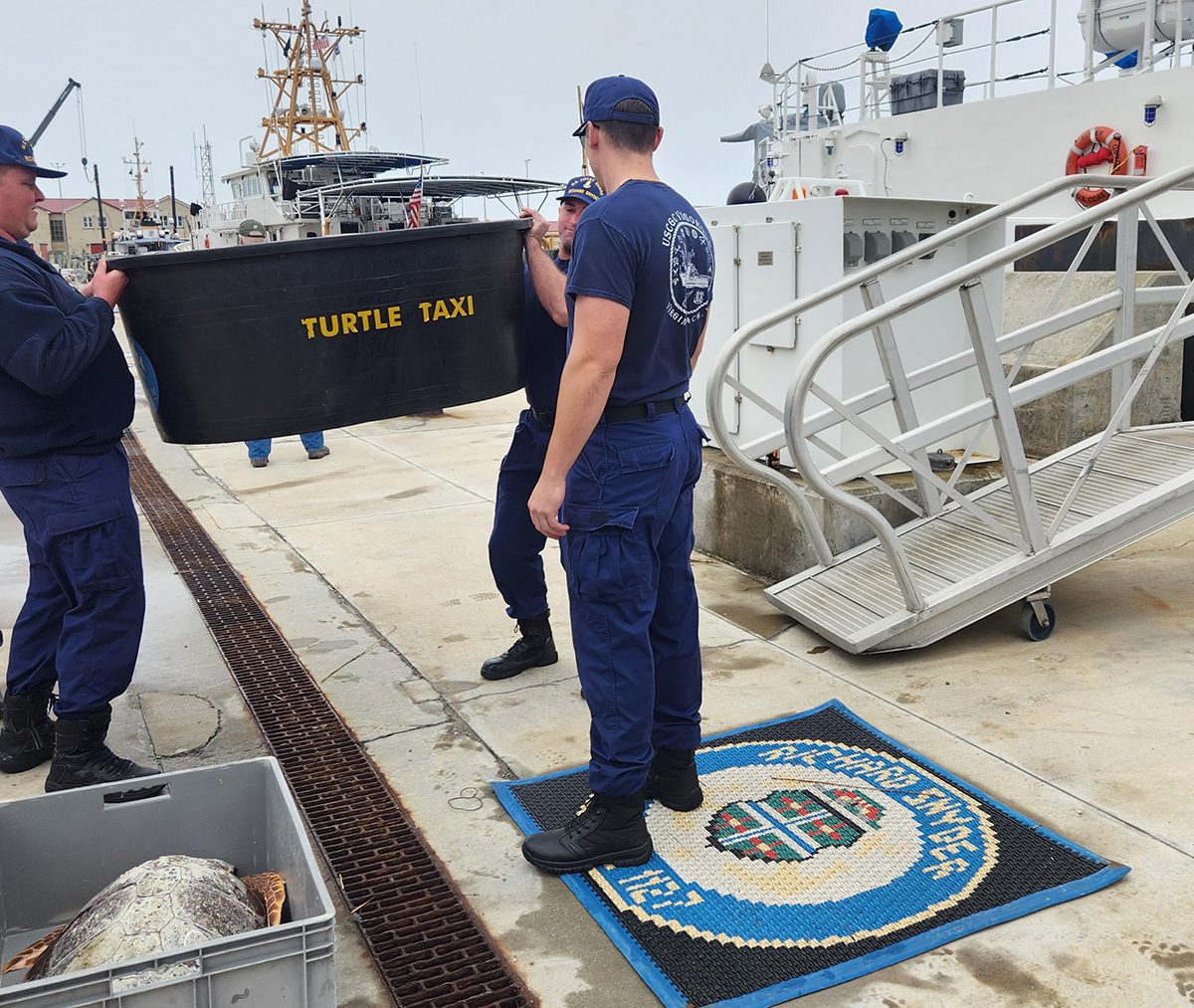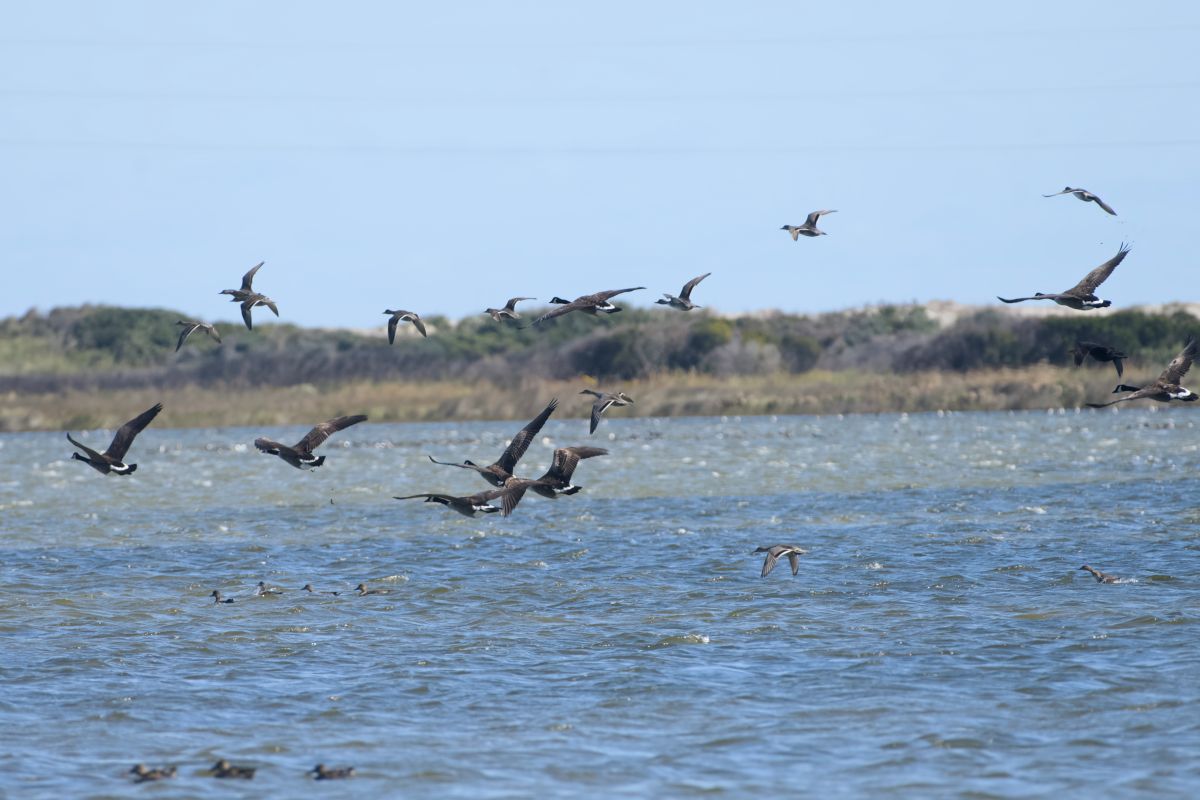
When it comes to saving cold-stunned sea turtles, pardon the cliché, but it really does take a village.
There are those at the front end of the process, like the North Carolina Wildlife Resources Commission authorities who follow water conditions to pinpoint temperature dips, the volunteers and professionals with the National Park Service who help go out looking for turtles during cold snaps, the veterinarians who perform triage, those who work in places that house and nurse the turtles back to health, and those who get healthy turtles back to the sea.
Supporter Spotlight
“Whenever we have a mass stranding even the people that have to come together to get the sea turtles, transport the turtles and then do the triage on the turtles before we even get them is a huge undertaking,” said Michele Lamping, aquarist and sea turtle specialist with the North Carolina Aquarium at Pine Knoll Shores.
The state’s three aquariums recently released 107 loggerhead, green and Kemp’s ridley sea turtles – the most common sea turtle species to North Carolina – back to Atlantic Ocean, where they hitched a ride from a U.S. Coast Guard cutter, the crew of which got the turtles back to warmer water.

Cold-stunned turtle strandings are typical this time of year. Sudden, overnight drops in temperatures in sounds, which are feeding grounds and refuge areas for sea turtles, can equate to hefty patient loads at the aquariums and Karen Beasley Sea Turtle Rescue and Rehabilitation Center in Surf City.
The typical chilled-to-the-core patients are juveniles tend to overwinter in shallow waters that, when get too cold too fast, cause the turtles to become inactive, float and bob on the surface where they’re at the mercy of winds and currents.
“It’s just simply that the land masses, the way they are between the sound and the ocean, you have these winds and they kind of block the turtles from being able to leave the sound and get back to the ocean in time before they’re cold stunned,” Lamping said. “So, the warm water’s not far away, but they have to swim around the whole island to get there sometimes and those are the ones that get stuck.”
Supporter Spotlight
Sea turtles thrive best in waters where temperatures are in the 70s.
“That’s when everything metabolically is working the best,” Lamping said. “And then when it gets to the 60s they’re still functioning fine, but once you get in the 50s that’s when they start shutting down.”
Sea turtles can actually freeze to death.
Larger turtles tend to handle the cold better, but even they are susceptible to cold snaps. Lamping said finding larger, cold-stunned turtles is uncommon, but it does happen.
The cold-stun season usually begins in December and January and slows down by March in North Carolina. Rehabilitation facilities here take turtles stranded in areas further north as early as November.
The time it takes a turtle to recover and be returned to the wild depends on everything from timing to the extent of the turtle’s injuries.
Though rare, some turtles are found within a day of being cold-stunned and can be immediately taken to the ocean and released.
Those that have suffered in the cold for more than a day may take anywhere from one to three months to recover. Sea turtles that have suffered severe frostbite and bone deterioration due to cold exposure may be in rehabilitation for more than a year.
“Most of them go through maybe about a month,” Lamping said.
Once a turtle is transported to a rehabilitation center, the general recovery process goes like this: it’s likely too weak to lift its head so it spends the first day or two out of water where it is kept hydrated with subcutaneous fluids, then the turtle is placed in shallow water so that it may begin drinking.
Those suffering from pneumonia or various infections are typically administered injectable antibiotics. Most turtles are not given oral antibiotics because they do not feel well enough to eat.
The sea turtles released earlier this month out of Coast Guard Fort Macon were rehabilitated from December and January strandings. Only six turtles brought in during that timeframe did not pass their physicals. Lamping said those turtles will probably be cleared for release within the next two weeks.
Most of the turtles released were rehabilitated at the Sea Turtle Assistance & Rehabilitation Center, or STAR, at the Roanoke Island aquarium.
STAR still has nearly 80 cold-stunned patients. Collectively, the aquariums at Pine Knoll Shores and Fort Fisher are caring for fewer than 20.
Stranded sea turtles may be reported by calling 252-241-7367 or your local stranding response team.







